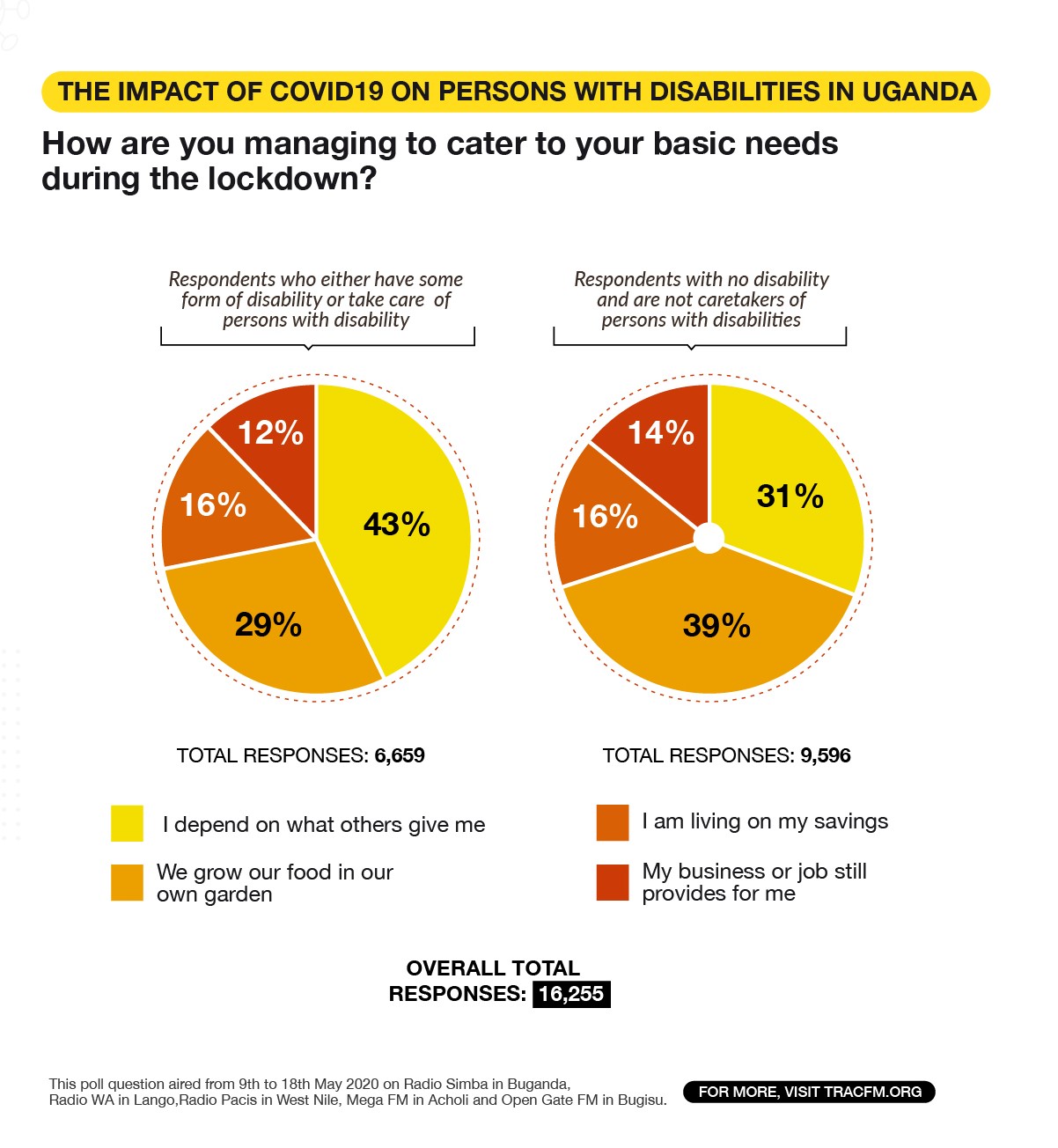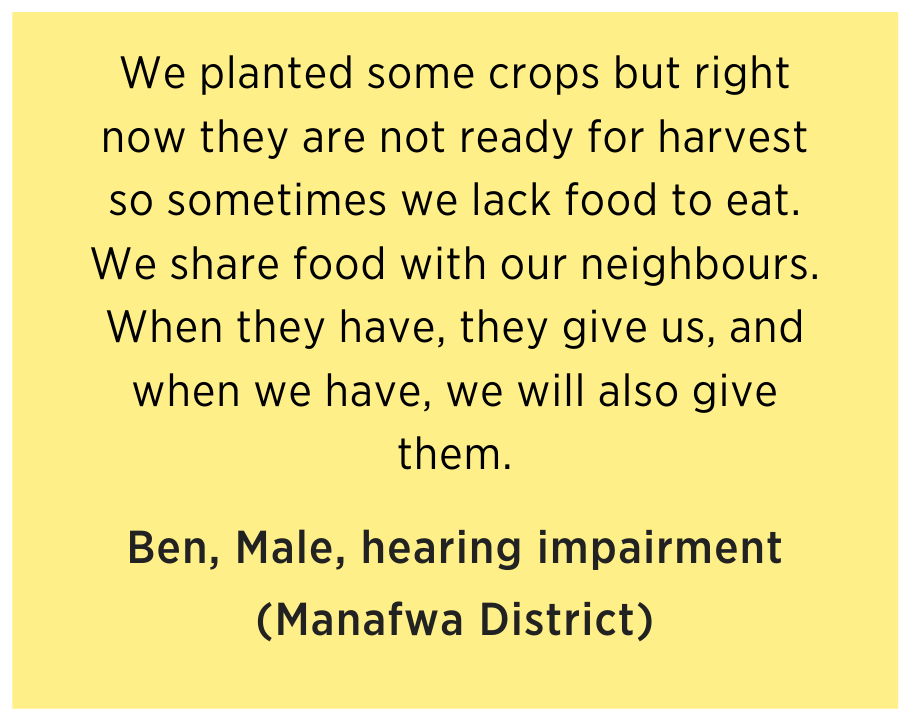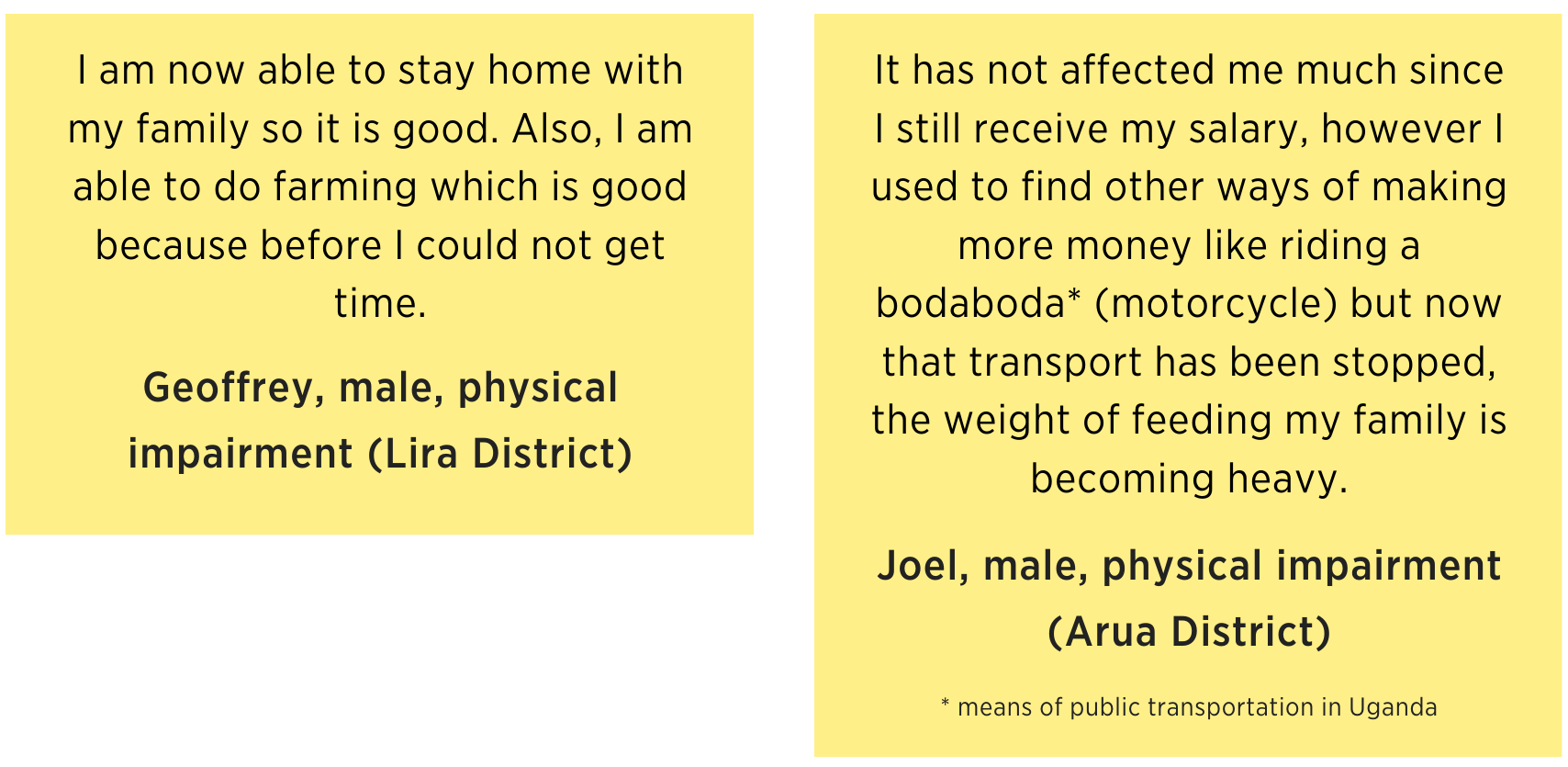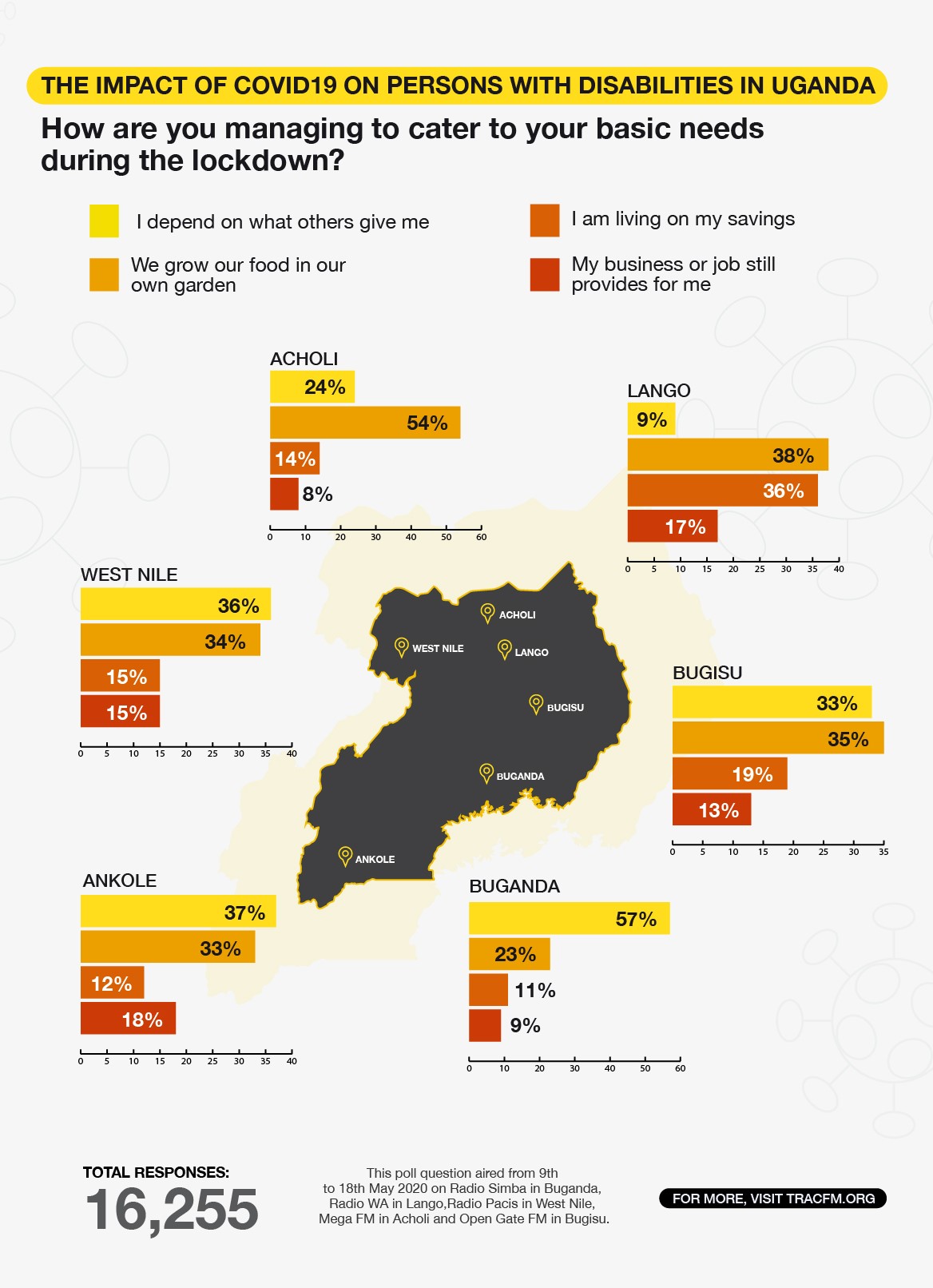Poll 4: Effect of the COVID-19 lockdown on livelihoods
The nationwide lockdown imposed to curb the spread of the coronavirus in March 2020 has greatly affected small and medium sized enterprises where 70% of Ugandans earn their livelihood (UBOS, 2018). From limited access to transportation and the closure of commercial buildings to suspension of any services not considered “essential” by the government; earnings have significantly reduced for many. For people with disabilities who, even before the lockdown, faced barriers accessing employment and livelihood activities – the effects of the lockdown can be assumed to be even more pronounced. In the poll question below, we set out to discover how the lockdown has affected the livelihood activities of Ugandans both with and without disabilities.

Depending on assistance
43% of respondents with disabilities (or caretakers of people with disabilities) and 31% of respondents without disabilities reported depending on assistance from others to survive. Many people with disabilities in Uganda experience some degree of poverty. Studies have shown that households headed by an individual with a disability are 38% more likely to live in poverty than households headed by an individual without a disability (1991 Ugandan Population and Housing Census and the 1992 Integrated Household Surveys, Hoogeveen, 2005).
 The co-relation between disability and poverty is undeniable; in addition to physical, sensory and/or mental limitations, people with disabilities face negative attitudes and discrimination from others in their community which further limits access to education and employment (TRAC FM and NUDIPU, 2019). This, in turn, decreases the options of livelihood activities available to them; often ending up relying on assistance from others.
The co-relation between disability and poverty is undeniable; in addition to physical, sensory and/or mental limitations, people with disabilities face negative attitudes and discrimination from others in their community which further limits access to education and employment (TRAC FM and NUDIPU, 2019). This, in turn, decreases the options of livelihood activities available to them; often ending up relying on assistance from others.
Living off home-grown produce
29% of respondents with disabilities reported growing their own food for sustenance in comparison to 39% of respondents without disabilities. In addition to poverty, people with disabilities face barriers to participation in agriculture including physical, sensory and/or mental limitations; as well as negative attitudes and discrimination from others in their communities. This denies them and their families the opportunity to not only grow food for sustenance but earn a livelihood from agriculture.
Depending on savings
16% of respondents both with and without disability reported living off their savings. This is indicative of the percentage of Ugandans who depend on earning their daily wages to survive and sustain their families. To save requires a disposable income and a disposable income requires having an amount left-over after covering all fixed expenses. This is not the reality of the 70% of Ugandans working in the informal sector (UBOS, 2018). Those working in the formal sector are not spared either; with average monthly salaries ranging from 50,000 ($13) to 500,000 ($133) UGX per month (Balloon Ventures, CITI, 2018) and the ever-rising cost of living; having a surplus to save is a luxury for many. The recent salary cuts and lay-offs as companies try to stay afloat during the COVID-19 pandemic and lockdown restrictions have also greatly affected those in the formal sector.
Little/no impact on livelihood
12% of respondents with disabilities reported that their jobs and/or businesses still provided for them (2% less than respondents without disabilities). This could be explained by the fact that not all workers have been affected negatively by the lockdown. A few workers in sectors that were considered by the government as essential (medical, media and communications, construction, retail, agriculture, etc) have been able to keep their jobs and/or their businesses running. Those having jobs where they could still work at home or those having businesses that could run just as efficiently online have been spared from some of the negative effects of the lockdown. However, as seen by the percentages, this is a minority of the population.
Regional differences in responses
 57% of respondents from Buganda/Central region reported depending on assistance to survive during the lockdown compared to only 9% of respondents in Lango region. Central region is the most urbanised region in the country and draws the most investment in public and private resources. This in turn attracts a large number of workers both in the formal and informal sector. Both sectors have been affected greatly by the COVID-19 lockdown as earlier discussed.
57% of respondents from Buganda/Central region reported depending on assistance to survive during the lockdown compared to only 9% of respondents in Lango region. Central region is the most urbanised region in the country and draws the most investment in public and private resources. This in turn attracts a large number of workers both in the formal and informal sector. Both sectors have been affected greatly by the COVID-19 lockdown as earlier discussed.
This could also explain why central region reported the least percentage of respondents living on their savings (11%). 54% of respondents from Acholi region reported living off home-grown produce compared to 23% of respondents from Buganda/Central region which is indicative of access/availability of land for agriculture in northern Uganda compared to central Uganda.
Overall, respondents from western and eastern region reported experiencing the least impact on livelihoods from the COVID-19 lock-down. According to the Uganda census of agriculture (2008/2009), the Western region of Uganda holds the highest number of agricultural households (28.5%) closely followed by eastern region at 25.2%. Agriculture offers food for sustenance as well as income and was one of the sectors that was allowed by the government to remain operational during the lockdown.

